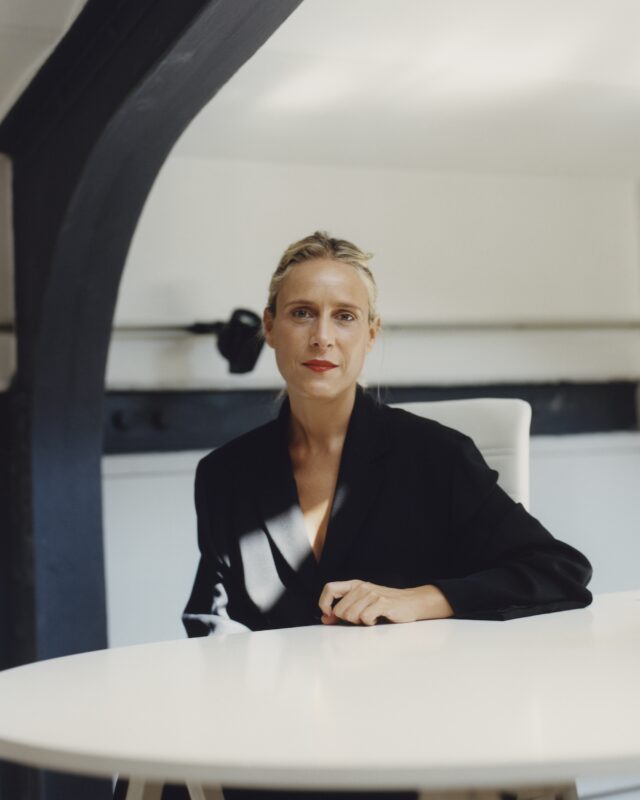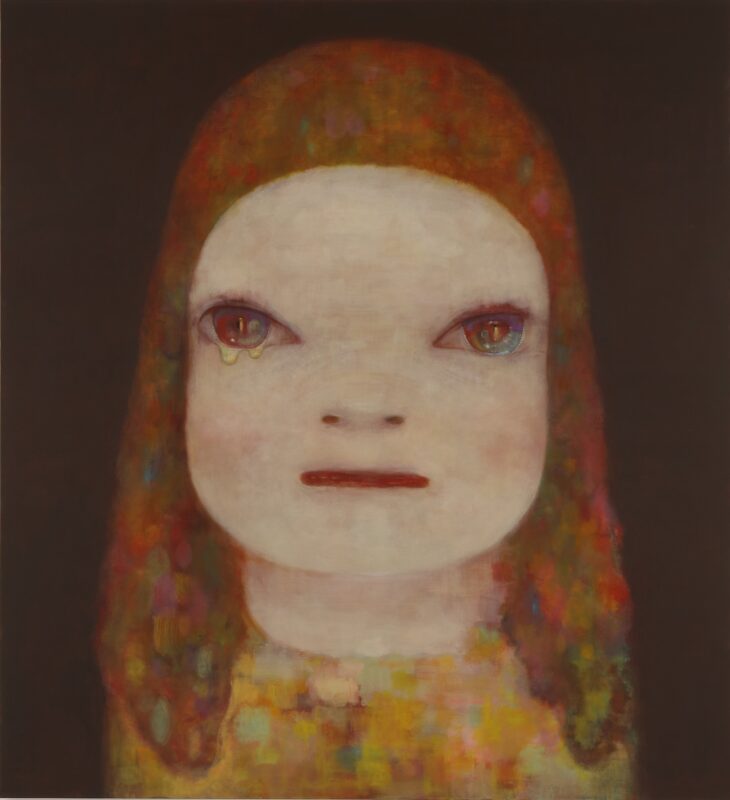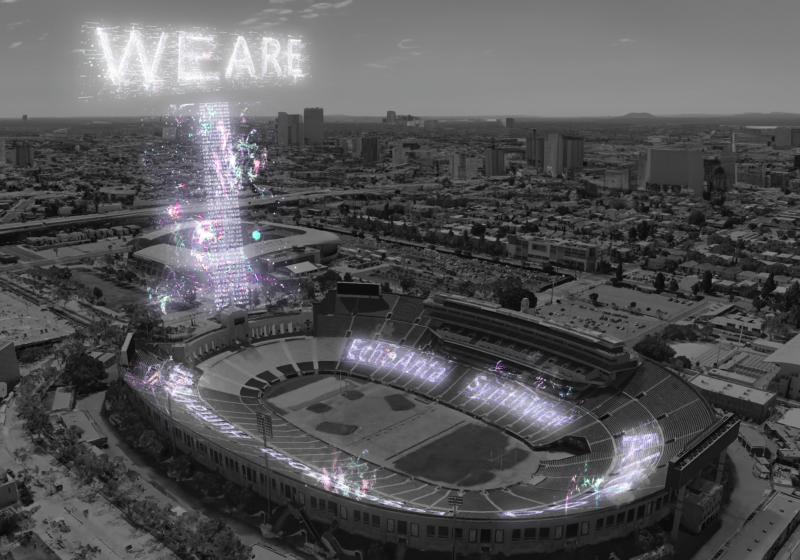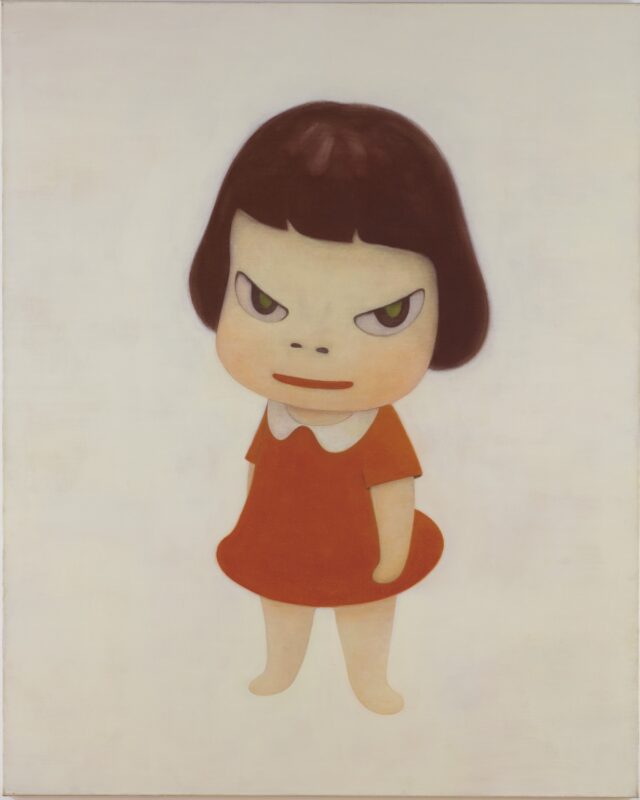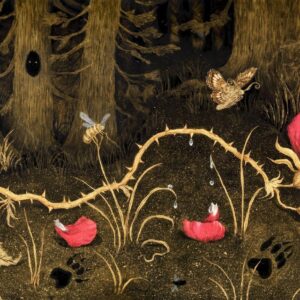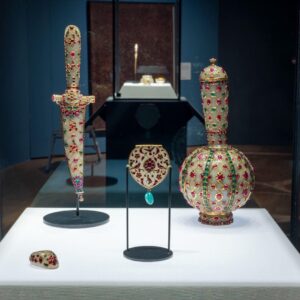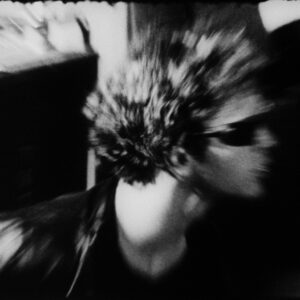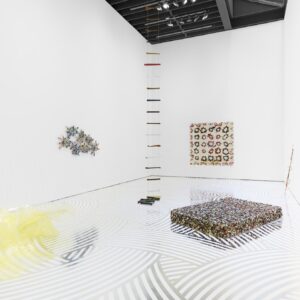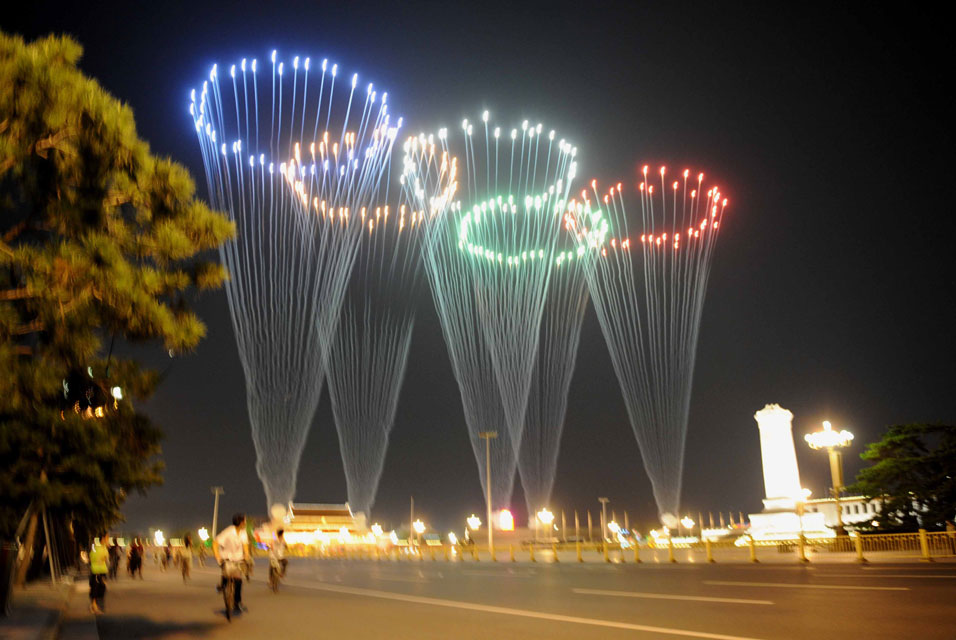
From March 17 to September 6, 2009, the Guggenheim Museum Bilbao presents Cai Guo-Qiang: I Want To Believe, an exhibition that presents the full spectrum of the artist’s multimedia art in all its conceptual complexity.
The exhibition comes to Bilbao after its success at the Solomon R. Guggenheim Museum, New York, where it became the most visited visual art show in the Museum’s history and at the National Art Museum of China in Beijing, where it was part of the cultural program for the 2008 Olympic Games. Cai Guo-Qiang is internationally recognized as an artist, curator, and creator of large-scale explosion events, who has been active in exhibitions, biennales, and public celebrations around the world for the last twenty years. This comprehensive retrospective is the Guggenheim Museums first solo show devoted to a Chinese-born artist.
Co-curated by Thomas Krens, Senior Advisor for Global Affairs, and Alexandra Munroe, Senior Curator of Asian Art at the Solomon R. Guggenheim Museum, Cai Guo-Qiang: I Want to Believe was conceived in close cooperation with the artist as a spectacular site-specific installation within the iconic architecture of Frank Gehry’s building in Bilbao. Occupying the second floor and the Museum Atrium, the exhibition charts the artist’s creation of a distinctive visual and conceptual language across four mediums: gunpowder drawings; explosion events; installations; and social projects. With some 50 works from the 1980s to the present—selected from major public and private collections in the U.S., Europe, and Asia—the exhibition examines Cai’s significant formal and conceptual contributions to contemporary international art and establishes his influence as a cultural producer of socially provocative artworks for large audiences. “Cai Guo-Qiang has literally exploded the accepted parameters of art making in our time,” said Thomas Krens. “He draws freely from ancient mythology, military history, Taoist cosmology, Maoist revolutionary tactics, Buddhist philosophy, pyrotechnic technology, Chinese medicine, and contemporary global conflict.”
Further, the spectacular installation Inopportune: Stage One , 2004 gives the Museum Atrium a special role in the show. The work consists of eight cars pierced by light tubes, arranged in a sequential circle that starts with an intact car on the ground and dynamically progresses into a cinematic simulation of the car exploding. Visible from the exterior of the museum, the work generates a direct dialogue with the museum’s surroundings and Frank Gehry’s architecture.
Early Works: 1985–88
Cai Guo-Qiang’s early works in the exhibition date from 1984 to 1988, when he first developed the basic methodology and process of his signature gunpowder drawings and explosions. This selection of early works reveals Cai’s progressive search for a practice of art making that directly harnesses the spontaneity of natural forces. Ultimately, he arrived at an art where these forces allowed him to relinquish control, resulting in compositions formed by the random marks of sparks and smoke.
Cai’s early two-dimensional works on canvas and paper display key themes that would later come to define his conceptual concerns. Among these is his mining of Chinese folklore and mythology, wherein he appropriated popular images, traditional materials (such as gunpowder, a famous Chinese invention that is charged with cultural nationalism), and allegorical stories to specify the meaning of his work.
From the start, Cai sought to connect what he called the “unseen world” to his art, linking it to a metaphysical study of cosmic meridians of energy currents, primordial states of chaos, and the nature of formless matter. Initially, Cai experimented with laying oil paint on the canvas and blasting it with air blown from an electric fan that he held over the surface, shaping the movement of paint with the force of wind, as in Typhoon (1985). In 1984, Cai introduced gunpowder ignited directly on his oil canvases. Cai placed powder and fuses on the surface of the canvas, which he positioned horizontally on the floor. When ignited, first the fuses burned instantly along the cord lines, igniting the gunpowder and creating loud bangs and flashes of fire, which then vanished in clouds of smoke. The result is a textured surface that looks and feels like an explosion—the oil paint on canvas is blackened, charred, and erupted, arrested in a state of being expended in a flash, as in Gunpowder Painting No. 8-10 (1988). After he moved to Japan in 1986, Cai switched from igniting gunpowder on painted canvases to igniting it directly on sheets of Japanese-made paper.
Gunpowder Drawings
Cai Guo-Qiang’s drawings made from igniting gunpowder explosives laid on paper constitute a new medium of contemporary artistic expression. Together with the explosion events to which they are conceptually linked, Cai’s gunpowder drawings convey his central idea of mediating natural energy forces to create works that connect both the artist and the viewer with a primordial state of chaos, contained in the moment of explosion.
For the drawings, Cai frequently uses sheets of Japanese paper whose manufacture he specially commissions; its fibrous structure withstands and absorbs the impact of the explosion and the charring of the paper. Placing these sheets on the floor, he arranges gunpowder fuses of varying potency, loose explosive powders, and cardboard stencils to create silhouetted forms over the paper’s surface. Here and there, he lays wooden boards to effectively disperse the patterns resulting from smoke and the impact of the explosion. Cai then weights all these elements in place with rocks to intensify the explosion. Once the setup is completed, he ignites a fuse at one end of the work with a stick of burning incense. Then, with loud bangs, the ignited gunpowder rips across the surface of the paper, lighting the array of explosives according to its designated pattern and engaging artist and onlookers in a momentary encounter with the spectacular power of explosive destruction. A second or two later, the paper lies in clouds of acrid smoke. Assistants run to stamp out any embers with rags. Finally, the drawing is removed from the floor and hung up vertically for the artist’s inspection.
Cai’s production of gunpowder drawings can be organized into two periods: from his first drawings in 1989 to 1995, while living in Japan; and from 1996 through the present, while living in New York. During the Japan period, Cai produced two major series of gunpowder drawings that were directly connected to the development of his explosion events. These are Projects for Extraterrestrials and Projects for Humankind. The majority of the gunpowder drawings—whether a multi-panel folding screen or a single sheet of paper—were created as diagrams of Cai’s conceptual ideas and proposed visual designs for specific explosion events. Since his move to New York in 1995, Cai’s mastery over his materials has resulted in gunpowder drawings that are increasingly complex as both technical and pictorial feats.
Explosion Events: “Creative Destruction”
One of China’s most famous inventions is gunpowder—literally “fire medicine” in Chinese. Cai began using gunpowder and fuse lines to create explosion events for public audiences. He used the ground of a site and existing structures as a physical framework. The early events lasted between one and fifteen seconds. Since then Cai’s practice has evolved dramatically. He now produces aerial explosion events that are often developed with professional pyrotechnicians. Most recently, the artist has harnessed—in the engineering of the fireworks shells—the computerized technology to create more elaborate and precise explosions. Cai’s explosion events are often realized through commissions by museums, art biennials, or national and international agencies.
As time-based works created for live public audiences, the explosion events operate as performances, whose impact—thunderous bangs, fiery light, smoke, and floating debris—conjures both violent chaos and ritual celebration. And in the tradition of ephemeral art, the explosion events become known only through their documentation—photographs, videos, and drawings.
Among the more important works from the early phase of Cai Guo-Qiang’s career included in the show is a series of videos documenting the explosion events he staged in more than twenty cities, from 1989, together with the gunpowder drawings like Fetus Movement II: Project For Extraterrestrials no. 9, 1992, part of a larger breakthrough series entitled Projects For Extraterrestrials . A number of other works from this series will be on show in Bilbao. For the artist, imagining that extraterrestrial intelligence exists implies an approach similar to the function of art: the coexistence of two, or multiple, realities. The “I Want to Believe” slogan on a poster in Cai’s studio—which unbeknownst to the artist was popularized by the American science fiction television series The X-Files— captures the otherworldly idealism at the core of Cai’s protean artistic practice.
From the mid-1990s Cai has appropriated the atomic mushroom cloud, proposing that this memorable icon of the 20th century can shed a light in our collective consciousness when presented as artwork. The show at the Guggenheim Museum Bilbao brings together the most significant of the gunpowder drawings and the videos of the explosion events in the series The Century of Mushroom Clouds: Project for the 20th Century, 1995–96, and an album recently acquired by the Solomon R. Guggenheim Museum, Drawing for The Century of Mushroom Clouds: Project for the 20th Century (1995–96), which juxtaposes explosion images of a mushroom cloud with two actual lingzhi mushrooms, which are used as a traditional Chinese medicinal remedy.
The exhibition also includes Drawing for Footprints of History , 2008, a major panoramic gunpowder drawing measuring over 33 meters in length, created recently to commemorate the opening ceremonies of the 2008 Beijing Olympic Games, for which the artist served as Director of Visual and Special Effects. Cai was a core member of the creative team that planned the opening and closing ceremonies of the 2008 Olympic Games—ceremonies that were designed as art spectacles of unprecedented mass outreach that reached one-third of the global population.
Installations: Dialogue between local history and globalization
Cai’s practice expands to interactive installations that frequently recuperate signs and symbols of Chinese culture and brilliantly expose the dialectics of local history and globalization.
Several of Cai’s most highly acclaimed installations will also be on view at the Guggenheim Museum Bilbao retrospective. Reflection—A Gift from Iwaki , 2004, features the remains of a shipwrecked vessel transformed into a receptacle for several tons of white ceramics from thousands of broken porcelain. The installation was originally created for the Sackler Gallery in Washington, D.C. Cai Guo-Qiang’s nine-year stay in Japan, from 1986 to 1995, resulted in many long-term relationships with the Iwaki community. To produce the work, the artist mobilized local workers from Iwaki, and the video that recorded the social process of making the artwork can be seen alongside the work itself. The team of local inhabitants who have taken part in the installation of the work wherever the retrospective has been staged has also come to Bilbao to supervise the installation process in the galleries.
Another key installation is Bilbao’s Rent Collection Courtyard, 2009, which includes more than seventy life-size clay sculptures, arranged in narrative scenes, constructed on-site at the museum with the collaboration between local and Chinese sculptors. The work was inspired by a socialist-realist sculpture group from 1965, which represented the appalling situation of peasants under the yoke of a rapacious landlord during the pre-revolutionary Guomindang government, and which provided a foretaste of the propagandistic zeal of socialist-realist art during the Cultural Revolution (1966–1976).
For a decade, Rent Collection Courtyard (Shou Zu Yuan) was reproduced and erected in cities throughout China, where it was the most emotionally charged and ubiquitous political image after Mao’s portrait. Cai’s intention in showing this historically charged socialist-realist work is to expand our understanding of contemporary art by revealing the mass outreach and emotional power of a seemingly “retrograde” style of art that was dominant in China for decades. The work is also a barbed comment on the fate of art and artists under the manipulation of political ideology. For the sculptural ensemble’s re-creation in Bilbao, the artist has invited four Chinese artisans and students from the Fine Arts Faculty at the UPV University of the Basque Country to reenact the making of the work on site and then allow the sculptures to decompose over the course of the show.
One other major work included in the Bilbao exhibition, as spectacular as it is aesthetically pleasing, underscores the bond between the artist and the Solomon R. Guggenheim Foundation. Produced for the artist’s solo exhibition at the Deutsche Guggenheim in Berlin in 2006, the installation Head On is a kind of retable in which 99 life-size replicas of wolves run full-tilt towards—and into—a transparent glass wall.
Social Projects: Projects to “create culture”
Cai commenced what have been termed “social projects” in the early 1990s, working with non-art sites and volunteers outside of the professional art world to create spaces for debate. These ongoing experiments and interventions carry out the artist’s utopian ideals of social engagement and mobilization, with a sustained belief in the transformational nature and the potential for dialogue within communities of people.
In Everything Is Museum, the artist engages communities to produce art events in remote, non-art sites like military bunkers and old furnaces, such unconventional places generate unique opportunities for dialogue, while revealing the artist’s fascination with utopian ideals, and his unshakeable belief in art and culture’s capacity to transform. Everything Is Museum challenges the artists involved to produce significant works in alternative areas, in restricted, very basic conditions, with no security, no climate control, and even deprived of water or electricity.
Still in progress today, Everything Is Museum has a specific presentation at the Guggenheim Museum Bilbao, curated by the artist himself as part of the larger exhibition, and which includes documentary material and special contributions contributions by artist Kiki Smith and composer and conductor Tan Dun; the exhibition also includes architect Lord Norman Foster’s design for a new museum in the series, QMoCA, to be built in Cai’s hometown of Quanzhou; artist Jennifer Wen Ma has created a new video installation specifically for Bilbao and responding to the museum’s architecture. Everything Is Museum also presents realized and unrealized museum proposals for Guggenheim Museums worldwide, as developed by Thomas Krens during his tenure as director of the Solomon R. Guggenheim Foundation.
Cai Guo-Qiang was born in 1957 in Quanzhou, a coastal city in the province of Fujian, in southeast China. The port city’s remarkably rich history has been an essential source of inspiration for the artist’s oeuvre. During the era of Mao, some customs prohibited in other areas survived in Quanzhou and stimulated Cai’s childhood.
In the 1980s Cai studied stage design in Shanghai. In 1986, he moved to Japan, and in 1995, he moved to New York, where he lives today. Cai defines himself as a real “citizen of the world”, which explains the weakness of cultural barriers so essential to his work.
In 1996 the work Cry Dragon/Cry Wolf: The Ark Of Genghis Khan , 1996 was a finalist in inaugural Hugo Boss Prize at the Solomon R. Guggenheim Museum, which acknowledges innovation in the visual arts and was a major catalyst in the artist’s rise to international fame. It is among the highlights of the museum’s contemporary art collection and was exhibited in Bilbao in 1999.
Three years later he was the recipient of the Golden Lion Award at the 48th Venice Biennale for the installation he presented at the millennium Biennale: Venice’s Rent Collection Courtyard, 1999.
In 2007, Cai was awarded the 7th Hiroshima Art Prize. In tandem with the award, Cai’s exhibition at the Hiroshima City Museum of Contemporary Art in 2008 featured the explosion event Black Fireworks, realized at Motomachi Riverside Park near the Atomic Bomb Dome. Video documentation of this work is also part of the exhibition in Bilbao.
Cai has achieved wide international recognition through his solo exhibitions and large-scale outdoor explosion events, his active participation in international art events, and his artistic contribution to the opening and closing ceremonies for the 2008 Olympic Games.
